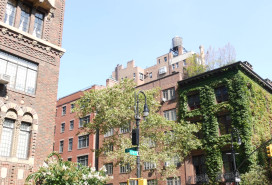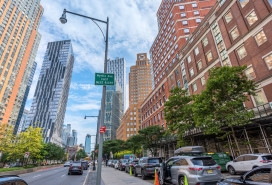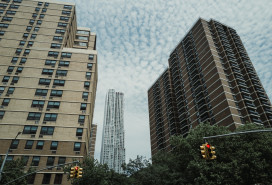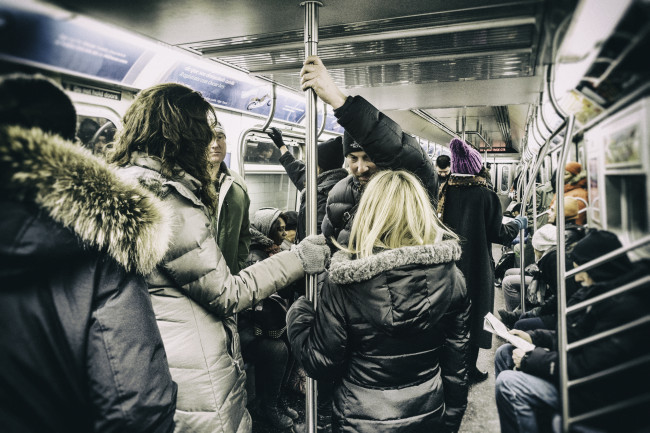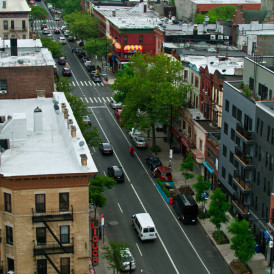A disability rights group is suing NYC over its poor subway accessibility
Disability Rights Advocates, a coalition of New York City groups that advocate on behalf of New Yorkers with disabilities, filed two lawsuits this week against the MTA. The first, filed in state court, takes issue with the fact that so many city subway stations are not wheelchair accessible, while the other, filed at the federal level, charges that the MTA has been negligent in maintaining the elevators in the few stations that do have them.
Despite the fact that the Americans with Disabilities Act, which includes among its provisions a guarantee that public spaces accommodate people with disabilities, was passed in 1990, accessibility remains a major issue in NYC. The number of accessible stations—that is, ones that include elevators and, in some cases, a gate that opens automatically—is limited, and a map of how the subway looks to a person with an ambulatory disability reveals the city's shortcomings when it comes to ADA compliance.
According to DRA, nearly 80 percent of the city's subway stations are inaccesible, and the ones that are accessible frequently have elevators out of service or littered with trash. Furthermore, it can often be a challenge to disembark trains: Brick previously spoke with a New Yorker who uses a wheelchair, who says passengers regularly have to help her navigate the wide gap between trains and station platforms.
Daniel Brown, co-counsel for DRA and an attorney with Sheppard Mullin Richter & Hampton LLP, says that taking action on the subway's inaccessibility is long overdue. "It's gotten to a point where there was a significant group of people lookign for attorneys to help them remedy this long outstanding problem," he says. "After the ADA was passed, people thought it would take some years to get the access the law was designed to achieve—maybe10, 20 years. Now it's over 25 years later. I'm sure a lot of people wish we had brought these suits sooner, but we are bringing them now, hopefully to get this fixed."
Last month, an article in the New York Times by Sasha Blair-Goldensohn further brought to light how daunting it can be to navigate the city with a disability. In 2009, Blair-Goldensohn was paralyzed after being struck in the head by a fallen tree branch in Central Park. Now, he says, trying to get around NYC in a wheelchair has made him aware of "the often dire effect of civic dysfunction on the vulnerable... New York’s subway is by far the least wheelchair-friendly public transit system of any major American city, with only 92 of the system’s 425 stations accessible. That means fewer than one in four stations can be used by people in wheelchairs when elevators are working—and they frequently are not."
Blair-Goldensohn adds that this problem is exacerbated by the MTA's failure to announce elevator outages, meaning that it's not unusual for commuters like him to be left stranded, having to resort to asking the fire department or other passengers to carry him up the stairs.
And in the Observer, Claire van Bever recalls how after knee surgery left her dependent on crutches, her usual commute time was tripled due to the lack of elevators at her local stop. Being forced to hobble up and down the stairs slowly, she writes, was stressful enough, and "each excruciating step was made more precarious by the droves of other straphangers on their morning commute."
As of now, NYC is required by law to make existing stations ADA-compliant whenever they are renovated; by 2020, the city must ensure that 100 stations are accessible. But, DRA argues, this is insufficient: "At the MTA’s current rate of elevator installation, it would take the MTA more than 100 years before 100 percent accessibility would be achieved,” says Anthony Trocchia, president of Disabled in Action (DIA).
To illustrate just how slow this process can be, the Briarwood subway station in Queens is scheduled to get an elevator this spring, the Queens Chronicle reports—three years after it was initially scheduled to debut.
DRA alleges that all this adds up to widespread discrimination against people with disabilities, a violation of the city's human rights laws. The lawsuits seek to remedy this by making the MTA install more elevators throughout the system, as well as create a plan to better contend with the frequent breakdown of elevators at accessible stations.
Brown grew up in the city, and he says that while he has seen some improvements over the years, there is still a very long way to go. "How could it be a city as important and crowded as New York is so far behind other cities in terms of access to the most important transportation mode we have?" he points out.
Bringing the city's subway system in line with the ADA will be costly—the Wall Street Journal pegs it at $1.7 billion—but Van Bever points out in her essay that this will likely benefit hundreds of thousands.
Of the cost, Brown wonders, "We're not unreasonable people, but it seems impossible to me, with the millions and billions spent in the past decade, why was this not on the agenda? Why was this not in the budget? Why is there not a plan already in place to make the subway system completely accessible? Isn't that important to everyone?"
Indeed, accessibility is an issue that seems likely to touch almost everyone, at some point in their lives. Van Bever writes: "More than one-in-ten New Yorkers, about 800,000, are disabled. And as Baby Boomers grow older, they too will need more elevators to ease their commutes. Yet our transportation system is geared towards the young and the fit and discriminates against the old and the disabled. It sends a stark message: They don’t belong."
You Might Also Like


